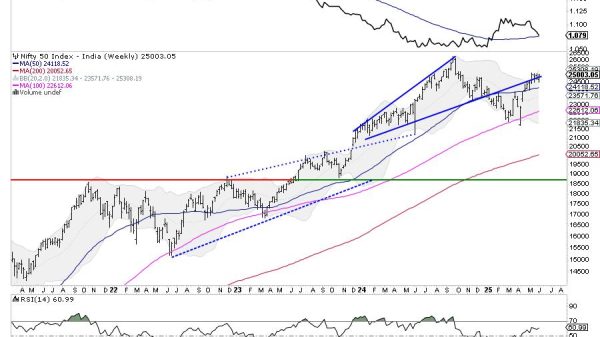What is the equity multiplier, and how to calculate it best?
Key Takeaways:
Equity multiplier gauges debt vs. equity in asset financing. A low equity multiplier often signifies lower financial risk. DuPont analysis breaks down ROE, including it. Understanding this leverage ratio aids financial health assessment.Have you ever thought about what an equity multiplier is? How are you able to calculate it the best nowadays? And what is the secret of the success of it when financial stakeholders are in question?
The equity multiplier is a risk metric. It demonstrates the proportion of a company’s assets funded by shareholder equity versus debt. To find the important ratio, divide the company’s total assets by the money shareholders have invested.
But let’s get to know more about it from a true financial perspective, shall we?
Understanding the Equity multiplier
The equity multiplier, or the leverage ratio, is a key metric in understanding a company’s financial health. DuPont analysis is important for assessing a company’s risk, financial strategy, and other financial ratios.
Why is this metric essential for investors?
It offers a snapshot of how a company balances equity and debt to fund its assets. A high equity multiplier indicates a significant amount of debt. On the other hand, a low equity suggests dependence on shareholder equity and potential challenges in obtaining loans.
Investors use this measure to compare companies in the same industry. They do this to determine if a company’s financial structure is similar or different from industry standards.
The equity multiplier helps understand a company’s financial health and its position in the financial world.
What is a good equity multiplier?
Now, what constitutes a “good” equity multiplier? Well, there’s no one-size-fits-all answer. It depends on various factors, including industry standards and a company’s circumstances.
A smart balance sheet approach considers the right mix of money and borrowing to achieve stability and maximize profits.
The Financial leverage ratio is connected to Return on Equity (ROE). A higher equity multiplier can increase ROE, which can increase returns but also increase financial risk.
How do cash flows play a pivotal role here?
Understanding how cash flows play a pivotal role in this equation is crucial, especially when considering how a company’s cash generation affects its ability to pay debt and the way it manages assets financed by debt.
When discussing it, you understand that it’s a crucial method for assessing a company’s financial health and strategy, especially when a significant portion of its assets is financed by debt.
There is no one-size-fits-all “good” multiplier. It depends on the situation and goals, and experts study a company’s financial situation.
The balance sheet shows the company’s equity and debt. It also includes information about the company’s ROE and cash flows. These factors help us understand the company’s health and growth potential.
How to Calculate It?
In this picture, you’ll see the Equity Multiplier Formula that will help you best calculate the equity. To learn how to read it, here’s what you need to know:
Total Assets refer to the overall value of a company’s possessions. This includes money, goods, money owed to the company, property, equipment, and investments. A company calculates its net worth by subtracting its total liabilities (including debts and obligations) from its assets. After settling all debts, it represents the shareholders’ residual interest in the company’s assets.A Window into Capital Structure
To understand this Financial leverage ratio, we must explore how it helps us understand a company’s finances.
The financial leverage ratio represents a metric that helps understand a company’s capital structure. It provides insights into the mix of debt and equity used to fund its operations.
If a company has an equity multiplier of 2, it indicates that debt finances half of its assets. Shareholder equity covers the other half.
This leverage ratio shows a company’s capital structure and if it is heavily reliant on borrowing money.
Why does Capital Structure Matter?
Now, why does this matter? The equity multiplier is important in DuPont analysis. DuPont analysis breaks down the calculation of return on equity (ROE) into its main parts.
Net profit margin (NPM) Asset turnover ratio Equity multiplierDuPont analysis helps identify if differences in ROE are due to financial leverage or industry standards.
The Role of Financial Leverage in ROE Enhancement
When a company chooses to have more debt, it can increase its return on equity if everything else stays the same.
Investors should be cautious of high ratios in the equity multiplier. These ratios can have a significant impact on a company’s financial performance and risk.
In summary, comprehending the equity multiplier is fundamental in assessing a company’s capital structure and level of financial leverage. It offers insights into its financial health and how it stacks within the industry.
The equity multiplier measures how companies finance their assets through debt or equity. It is an important metric. Let’s break it down using practical examples.
Equity Multiplier in Action
To illustrate this concept, let’s look at two companies: Apple and Verizon. Based on its 2021 fiscal year financial statement, Apple’s equity multiplier is 5.57x.
This implies that debt financing rather than equity funds a significant portion of Apple’s total assets. Verizon’s equity multiplier of 4.41x shows they rely more on equity than debt for financing.
Impact of Highly Leveraged Business Models
Apple’s higher equity multiplier suggests a more highly leveraged financial structure, making it potentially more sensitive to economic shifts and industry changes. In contrast, Verizon’s model, reminiscent of utility companies, involves stable cash flows and substantial debt.
Is Higher Always Better?
Investors usually prefer a lower equity multiplier, meaning they rely more on equity than debt when buying assets. High debt levels can pose financial risks.
The Industry Benchmark
What means a “good” equity multiplier? It varies by industry. Generally, investors view an equity at or below the industry average more favorably.
Decoding
An equity multiplier of 5.0x means a company’s assets are five times larger than its equity. In simpler terms, debt funds 80% of the assets, while equity covers the remaining 20%.
Factors at Play
A company’s equity multiplier can change if its assets’ value or liabilities’ level changes.
When assets go up and liabilities go down, the equity gets smaller. This means less reliance on debt and more use of shareholders’ equity to finance assets.
The equity multiplier, drawn from financial statements, is a valuable tool for investors. It provides insights into a company’s financial structure and risk profile while helping evaluate its position within its industry.
Allowing investors to assess the extent
The ratio helps investors understand two things about a company. First, it shows how much the company relies on borrowing money. Second, it indicates how effectively the company utilizes the money from shareholders.
By considering the equity multiplier alongside industry benchmarks, investors can gauge the company’s financial competitiveness and potential for growth. Overall, this metric is an essential component of comprehensive financial analysis, aiding stakeholders in making informed investment decisions.
The Crucial Role of Equity Multiplier Total Assets
The equity multiplier illustrates how both debt and equity fund a company’s assets. It links to the total assets of the company.
This ratio helps investors and analysts assess the company’s financial health and risk level by understanding its financing structure.
Bottom line
The equity multiplier is vital for evaluating a company’s financial structure and risk. It shows how much a company owes and how much it owns, helping to assess its health and potential for growth.
Investors consider it within industry benchmarks to make informed decisions and understand a company’s industry standing.
The post What is the equity multiplier, and how to calculate it best? appeared first on FinanceBrokerage.

























